
Dog fences are an essential tool for pet owners who want to keep their dogs safe and secure within a specific area. Whether you have a small yard or expansive property, finding the right dog fence will give you peace of mind while allowing your dog the freedom to play and explore. In this comprehensive guide, we’ll explore the different types of dog fences available, including wireless, electric, and GPS systems, as well as indoor and outdoor solutions.
1. Introduction to Dog Fences
A dog fence is more than just a barrier; it’s a way to protect your dog while giving them the freedom to roam safely within a defined area. Whether you live in a suburban neighborhood or on a large piece of land, a dog fence can prevent your pet from running away, encountering dangerous wildlife, or wandering into hazardous zones like streets.
Dog fences come in various forms—each with its advantages and specific uses. From the best wireless dog fences to more traditional electric fences and underground systems, understanding your options is key to choosing the right one for your pet and property.
2. Best Wireless Dog Fence
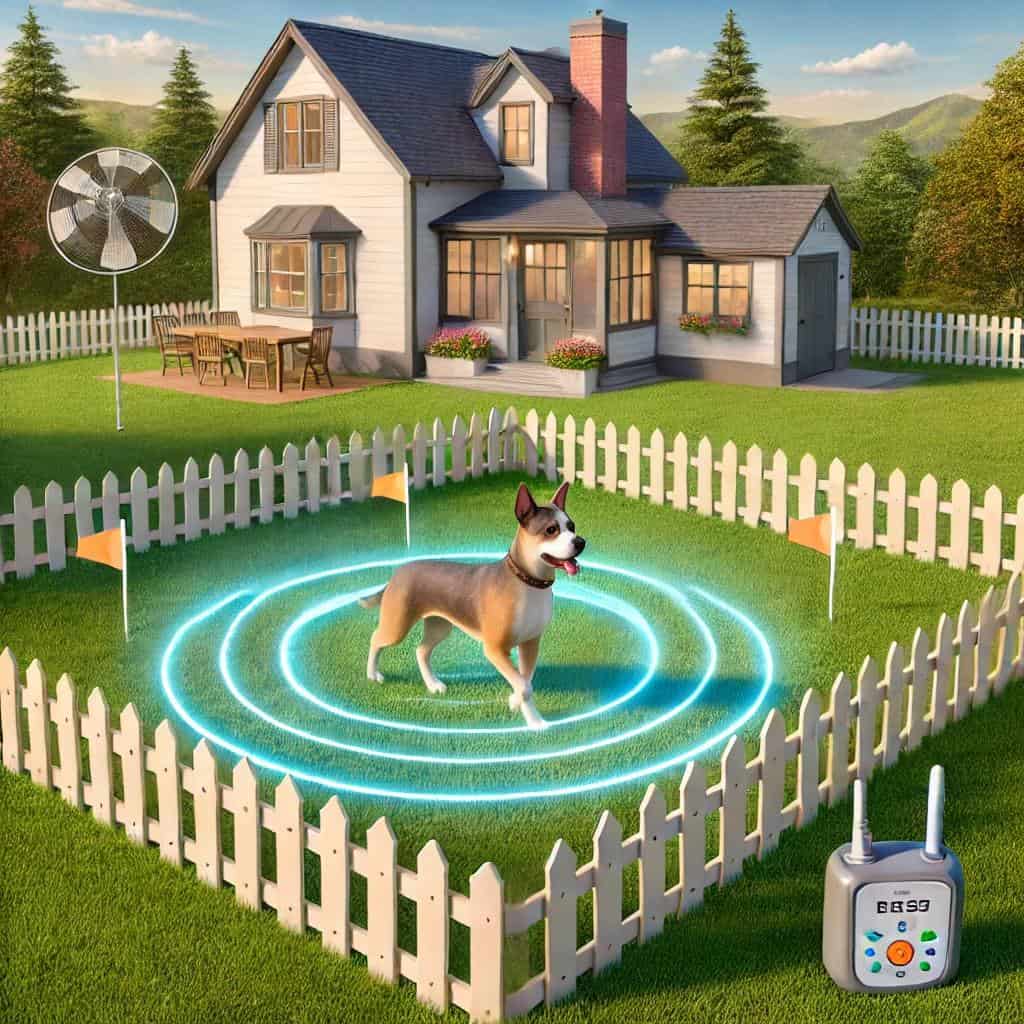
A wireless dog fence is a great option for those who need a flexible and portable solution. Unlike traditional fences, wireless dog fences use a central transmitter to create an invisible boundary around your home. If your dog ventures beyond this boundary, they’ll receive a gentle correction via a collar. These systems are ideal for temporary setups, travel, or areas where installing a physical fence isn’t practical.
Benefits of Wireless Dog Fences:
- No digging or installation: Wireless dog fences don’t require any digging or extensive setup, making them a great choice for those who want a quick and easy solution.
- Portable: You can take the transmitter with you if you travel, ensuring your dog remains safe even in new environments.
- Flexible boundaries: Many wireless dog fences allow you to adjust the boundary size depending on the space you want to secure.
Popular brands like PetSafe Wireless Dog Fence and Halo Collar offer top-notch features, including adjustable range, waterproof collars, and long battery life.
3. Electric Fence for Dogs
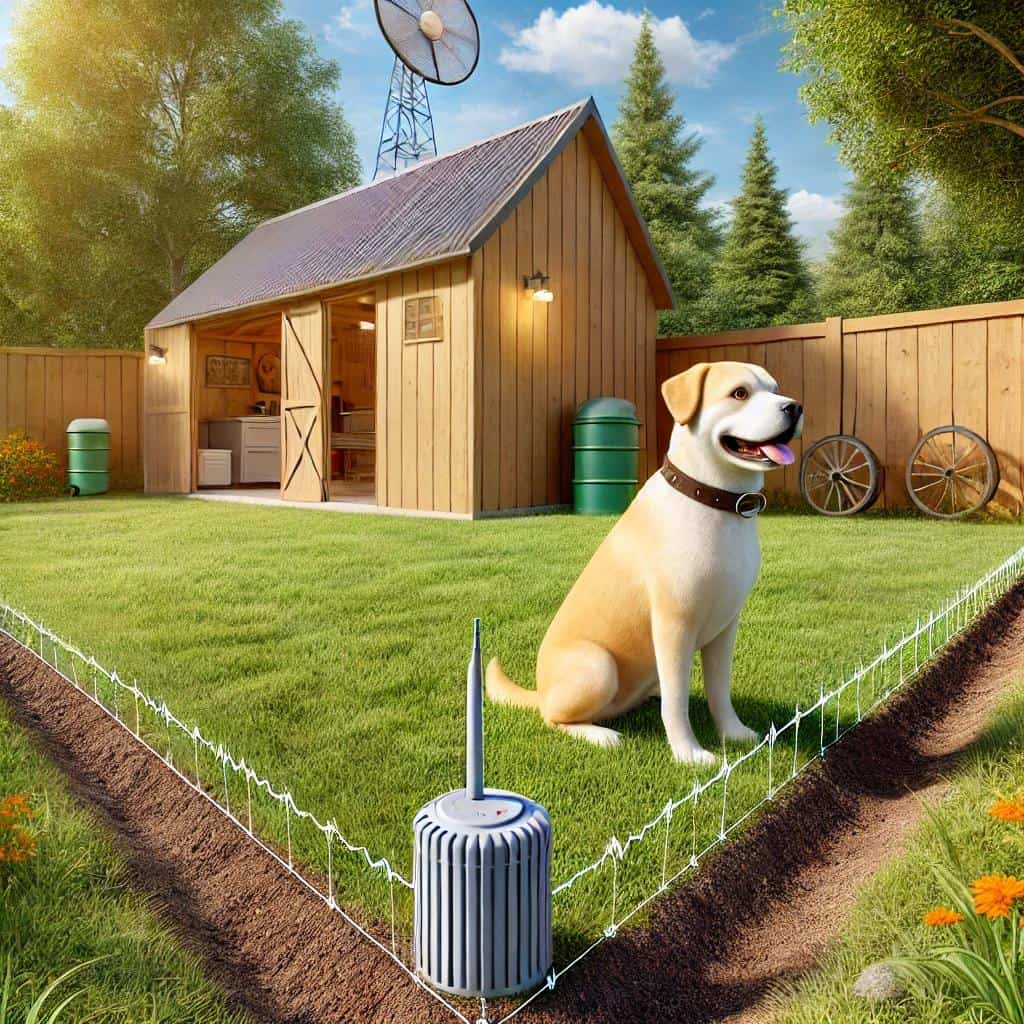
An electric fence for dogs works similarly to a wireless dog fence but often uses underground or above-ground wires to create a physical boundary. The dog wears a special collar that delivers a small electric shock if they approach or cross the fence line. While this may sound harsh, the correction is typically mild and designed to startle the dog rather than cause harm.
Why Choose an Electric Dog Fence?
- More control over the boundary: With electric fences, you can shape the boundary according to your property layout, making it ideal for irregularly shaped areas.
- Long-lasting and reliable: Once installed, electric fences require little maintenance and can last for many years.
- Effective for large areas: Electric fences are particularly useful for large properties where traditional fencing would be too expensive or difficult to install.
It’s crucial to properly train your dog to be able to comprehend the boundary limits and recognize the signals from the collar.
4. GPS Dog Fence
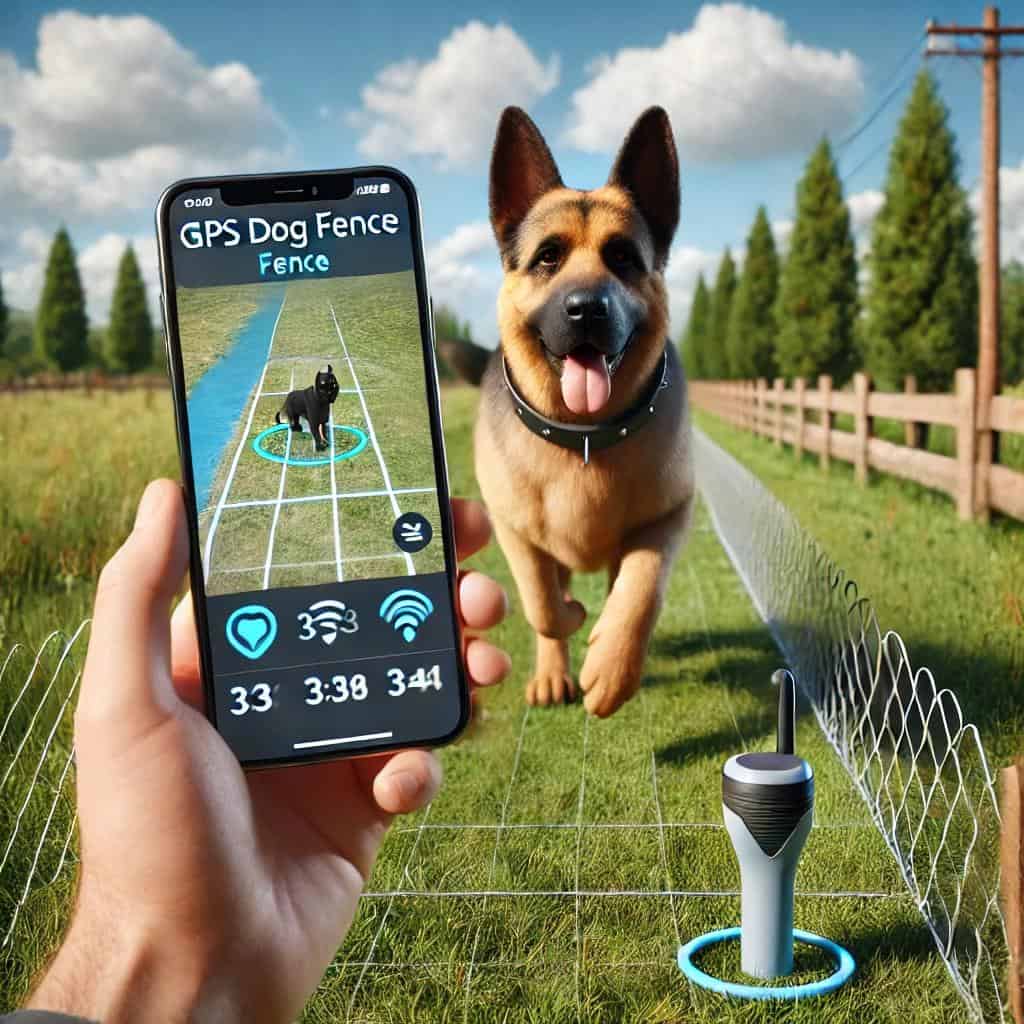
A GPS dog fence is one of the most innovative and advanced solutions for pet containment. Instead of using physical boundaries or transmitters, GPS dog fences rely on satellite technology to create a virtual boundary for your dog. The system typically comes with a GPS-enabled collar that tracks your dog’s location in real time.
Benefits of GPS Dog Fences:
- No physical boundaries: GPS dog fences allow for the creation of large, customizable zones without needing any wires or transmitters.
- Real-time tracking: You can monitor your dog’s movements in real-time through a mobile app, giving you peace of mind when your dog is outside.
- Great for large or remote areas: GPS dog fences are particularly effective for rural or large properties where physical barriers are impractical.
Systems like SpotOn GPS Fence are gaining popularity for their advanced tracking capabilities, ease of use, and customizable features.
5. Dog Fence Outdoor
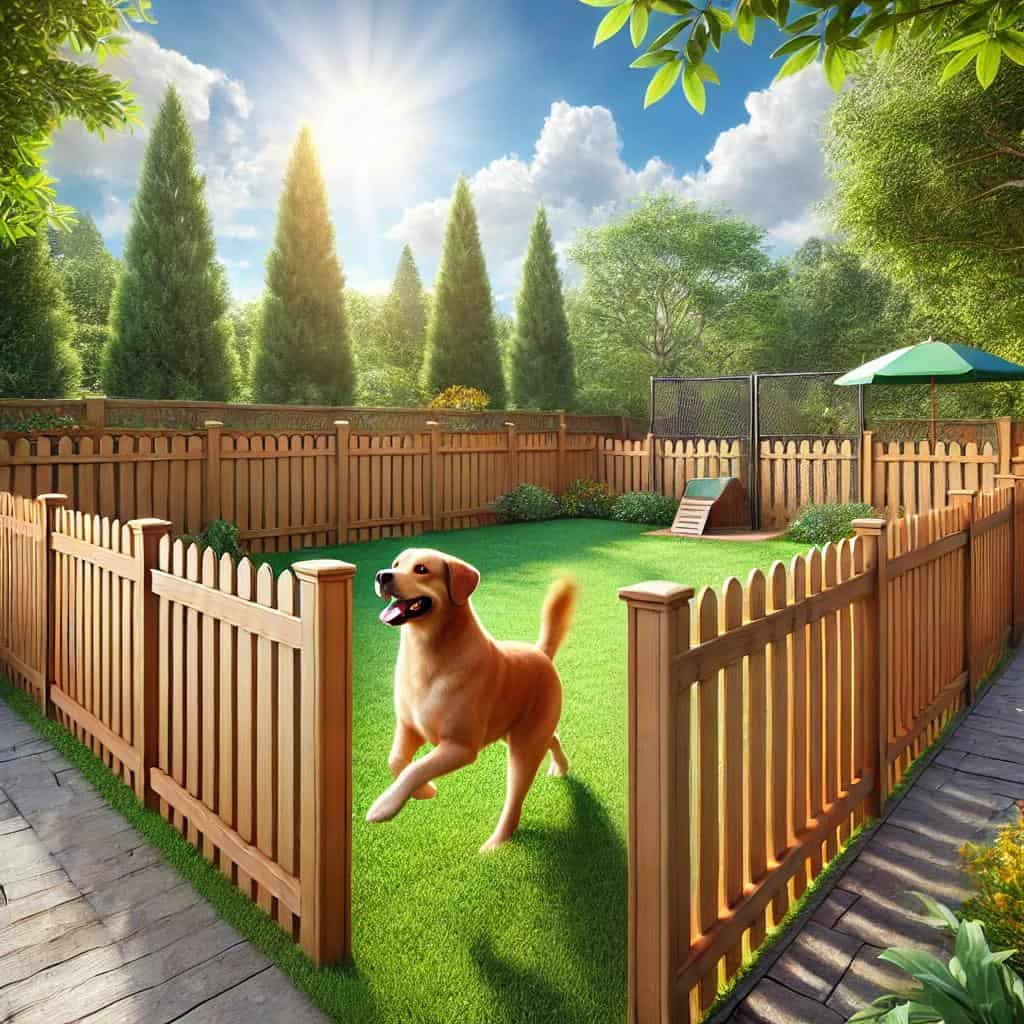
When choosing a dog fence outdoor, it’s essential to consider the type of terrain and how much space you want to allocate for your dog. Outdoor dog fences can range from traditional picket fences to more modern solutions like electric or wireless systems. Outdoor dog fences are designed to blend in with the natural landscape while providing a safe and secure area for your dog to roam freely.
Key Considerations for Outdoor Dog Fences:
- Durability: Outdoor fences must withstand various weather conditions, including rain, snow, and extreme temperatures.
- Height: Some dogs are skilled escape artists. If your dog is a jumper or climber, you may need a taller fence.
- Visibility: For aesthetic reasons, many homeowners prefer fences that blend in with their outdoor space while remaining functional.
Popular options include chain-link fences, wood picket fences, and invisible fences that use a combination of technology and minimal physical barriers.
6. Dog Fence Wireless Dog Fence
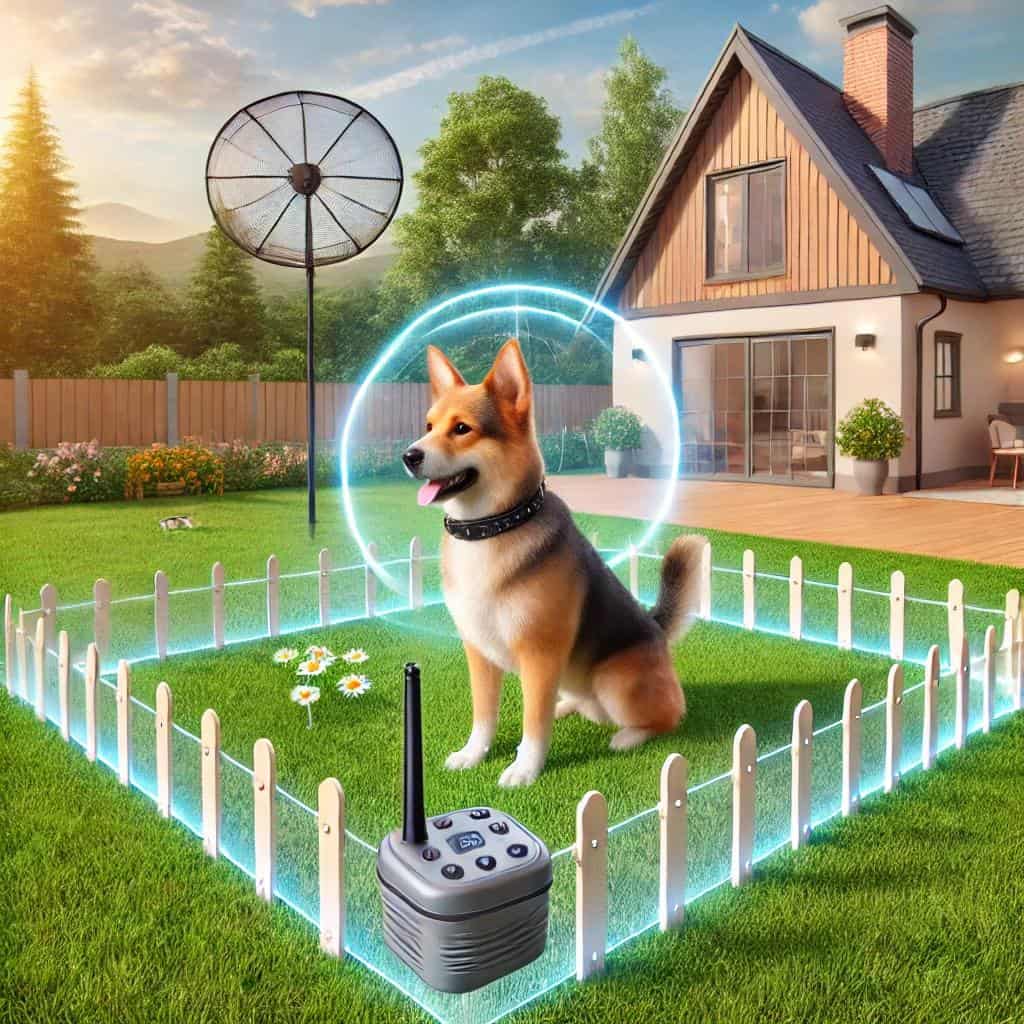
A dog fence wireless system is a perfect solution for pet owners who prefer a clean, clutter-free yard. Like the best wireless dog fences, a wireless dog fence creates an invisible boundary around a specific area, with no need for physical barriers like wood or metal fences. The system operates through a transmitter and a collar worn by your dog.
Advantages of Wireless Dog Fences:
- Easy to set up: Wireless fences are incredibly easy to install, requiring only a transmitter to create a boundary.
- Minimal maintenance: Since there are no wires or physical components to deal with, wireless fences require very little upkeep.
- Great for rentals: If you’re renting a property and cannot install a physical fence, a wireless dog fence provides a non-invasive solution.
These systems are great for people who want flexibility in where they set up the boundaries, especially if they plan to move or travel with their dogs.
7. Underground Dog Fence
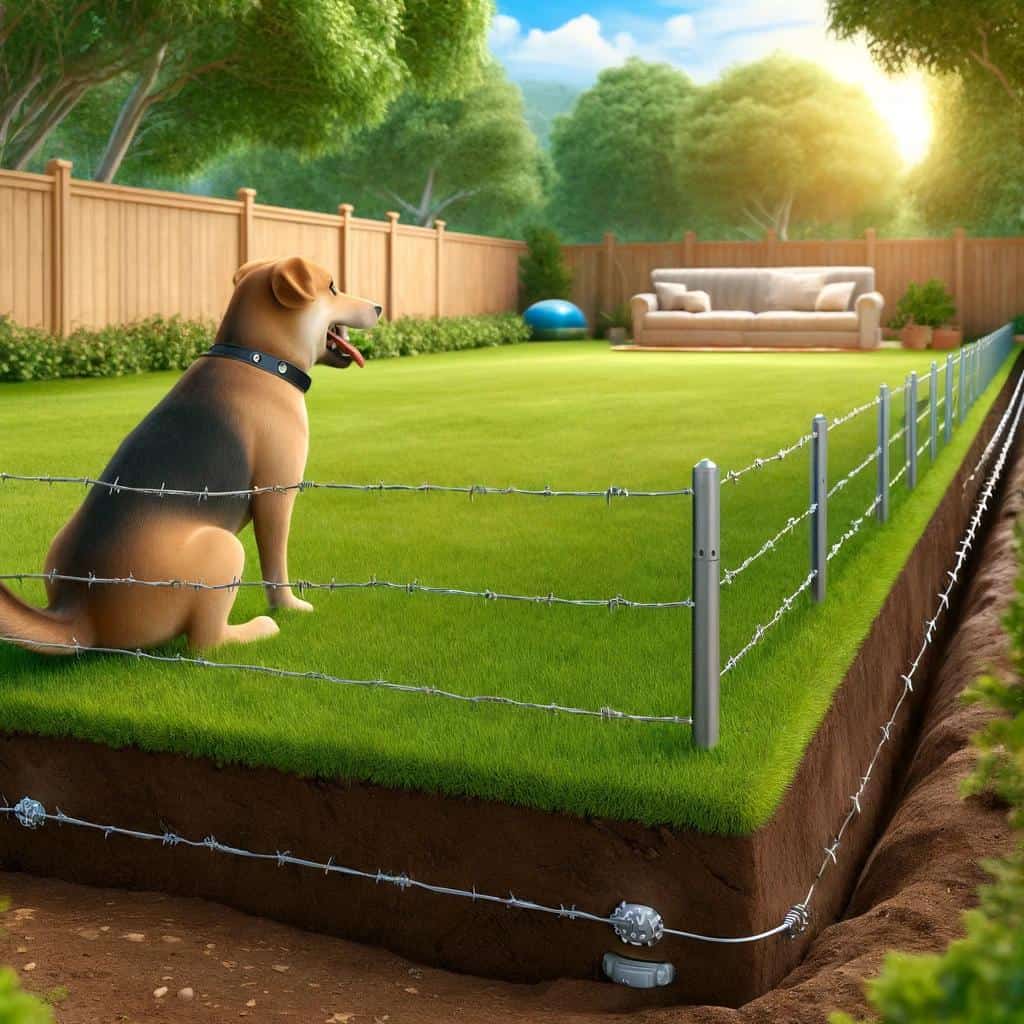
An underground dog fence is one of the most common types of invisible dog fences. It works by burying a wire around the perimeter of your yard, creating a hidden boundary. A transmitter sends signals through the wire, and your dog wears a collar that detects the signal. If your dog approaches the boundary, they receive a mild corrective stimulus.
Why Choose an Underground Dog Fence?
- Hidden boundary: The biggest advantage of an underground dog fence is that it’s invisible, keeping your yard open and uncluttered.
- Customizable shape: You can customize the shape of the boundary to fit your property’s specific layout, making it more versatile than some wireless systems.
- Safe and secure: Underground fences provide a reliable containment solution, especially for dogs that might dig under or jump over traditional fences.
While underground fences require more installation work, they’re incredibly effective and long-lasting.
8. Indoor Dog Fence
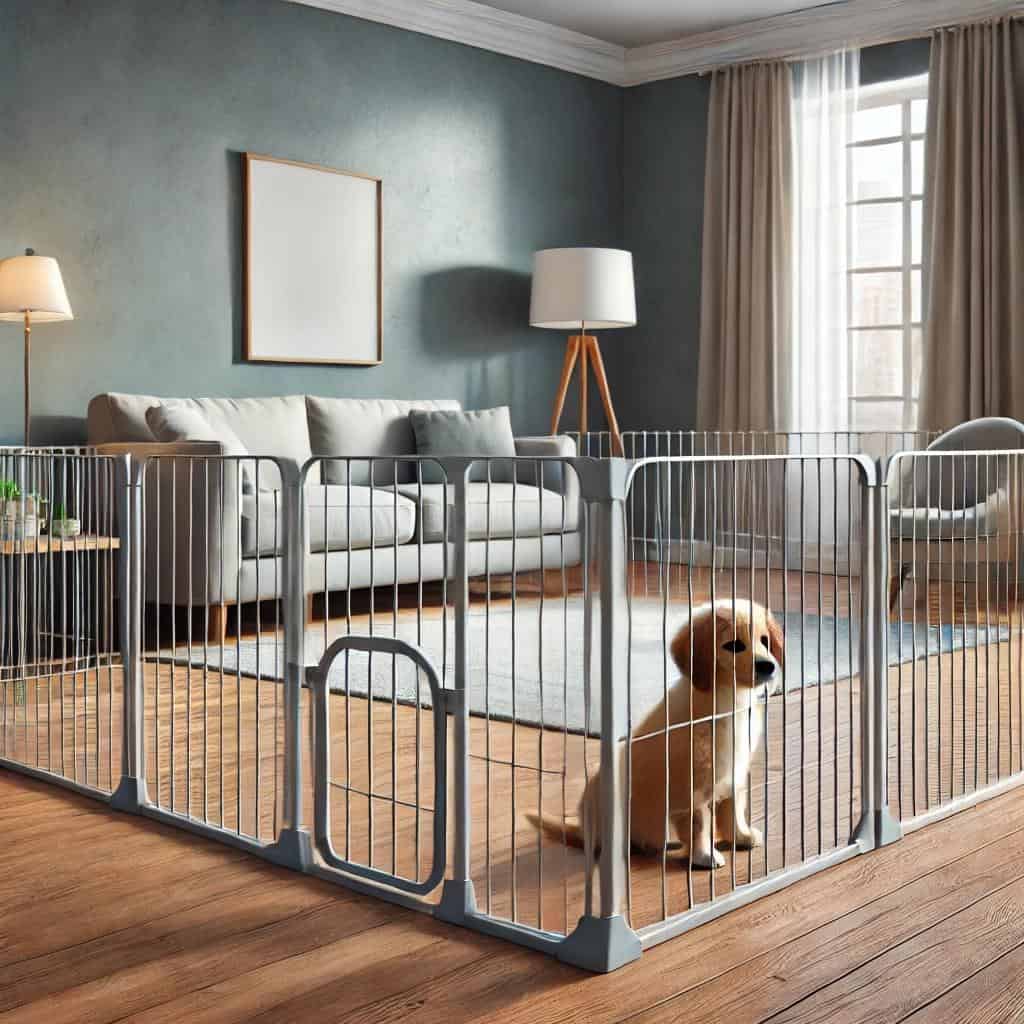
Not all fences are meant for the outdoors. An indoor dog fence is a great way to keep your dog confined to certain areas of your home. If you’re looking to keep your dog away from the kitchen, away from certain furniture, or in a specific room while you’re away, indoor dog fences are practical and easy to use.
Types of Indoor Dog Fences:
- Portable barriers: These are lightweight, movable barriers you can place across doorways or hallways to block access.
- Freestanding gates: These are popular for sectioning off certain areas without needing to drill holes or install permanent fixtures.
- Electric indoor fences: Some systems work similarly to outdoor electric fences but on a smaller scale, creating invisible boundaries within the home.
Indoor dog fences are ideal for managing your dog’s behavior inside the home and preventing them from accessing certain areas.
9. How to Choose the Right Dog Fence
pWith so many options available, choosing the right dog fence depends on your specific needs and your dog’s behavior. Here are some factors to consider:
- Property size: For larger properties, an electric or GPS dog fence might be the best option, while smaller yards might do well with a wireless or physical fence.
- Dog’s temperament: Certain breeds of dogs react better to certain types of boundaries. Dogs that are more aggressive or adventurous might need a stronger correction system like an electric or underground dog fence.
- Aesthetics: If you’re concerned about the appearance of your yard, invisible fences (wireless, electric, underground) may be preferable to physical barriers.
- Budget: Dog fences range from affordable portable barriers to more expensive GPS tracking systems, so consider your budget when making a decision.
10. Conclusion: A Safe and Secure Boundary for Your Dog
Choosing the right dog fence is crucial for your dog’s safety and well-being. From wireless dog fences that offer flexibility to underground dog fences for a more permanent solution, there’s a wide range of options available to suit every pet and home. Whether you need an indoor dog fence to manage your pet’s movement inside or a GPS dog fence to monitor your dog on a large property, the right choice will give you peace of mind and keep your dog safe within a secure boundary.
Share your thoughts in the comments below! If you enjoyed this post, consider subscribing to our newsletter for more pet tips, stories and blogs!
